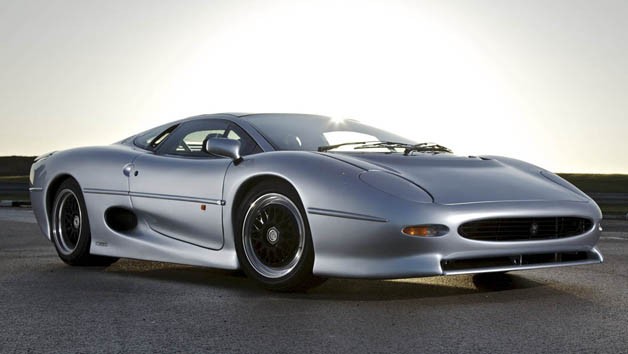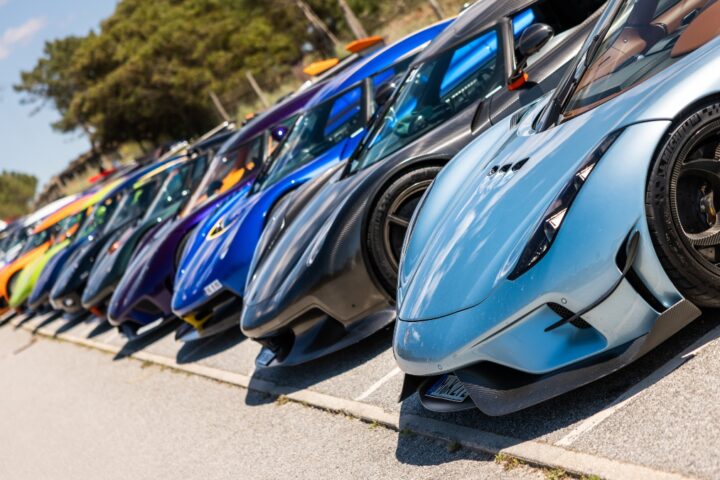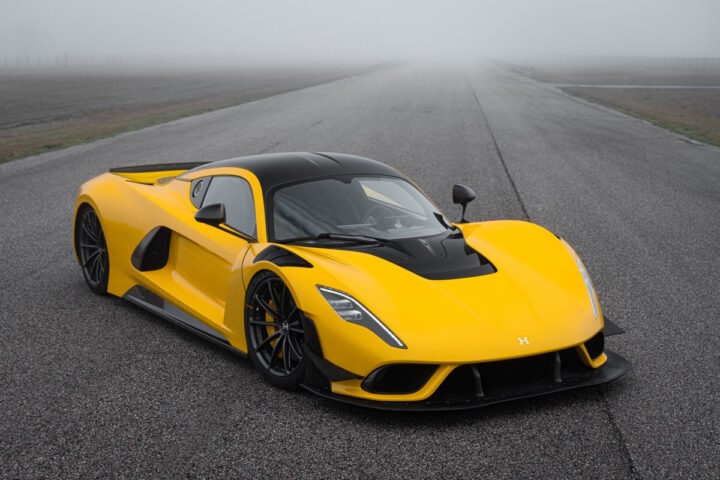
The XJ220 remains the fastest Jaguar ever produced and when launched in 1992 and, at 213mph, had the highest maximum speed of any production car. Constructed using advanced aluminium honeycomb, the car was immensely strong and, despite its size, weighed just 1,470 kg.
Originally conceived as a concept car, the XJ220 debuted at the 1988 British Motor Show. Designed by Keith Helfet, the car was signed off for production in December 1989 with TWR selected as the partner for the project.
Powered by a 3.5-litre, twin turbo V6, the XJ220 channelled its drive through the 18-inch Speedline rear wheels shod in specially developed 345/35 Bridgestone Expedia tyres via a five-speed gearbox and an AP Racing twin-plate clutch. The XJ220 developed 550 PS and 475 lbs ft of torque to allow it to accelerate to 60mph in under four seconds. Braking was supplied by a set of AP Racing discs and four pot callipers.
Built by hand in an all-new factory in Bloxham, Oxfordshire, prototype 001 was completed in 1990 while car 002 achieved 186 mph at Bruntingthorpe in September of the same year. The first customer car was completed in June 1992 with a retail price of £470,000.
Production ceased in 1994, by which time 275 cars had been built.
The silver car in attendance at the recent Jaguar Experience Day held at the Heritage Motor Centre, Gaydon is chassis 004, one of 10 pre-production vehicles. This example was used for extensive tyre and high speed testing at Fort Stockton, Texas, in 1991. Andy Wallace achieved a maximum speed of 213 mph in the car during the testing process.
Once these duties were completed the car was converted to race specification and was campaigned by Justin Law in the British GT Cup. On being retired from racing it was returned to its standard, road-going specification.
The yellow car is an XJ220 S – chassis ‘220-803’. This is the very first XJ220 S, built using spare parts from the Le Mans cars, including single-piece carbon fibre front and rear clamshells, revised springs and dampers and a claimed 700 PS. The luxurious interior of the road car was dropped in favour of Kevlar bucket seats and pared down, carbon trim.
The car was unveiled at the Autosport Show in 1993.
Source: Jaguar




















